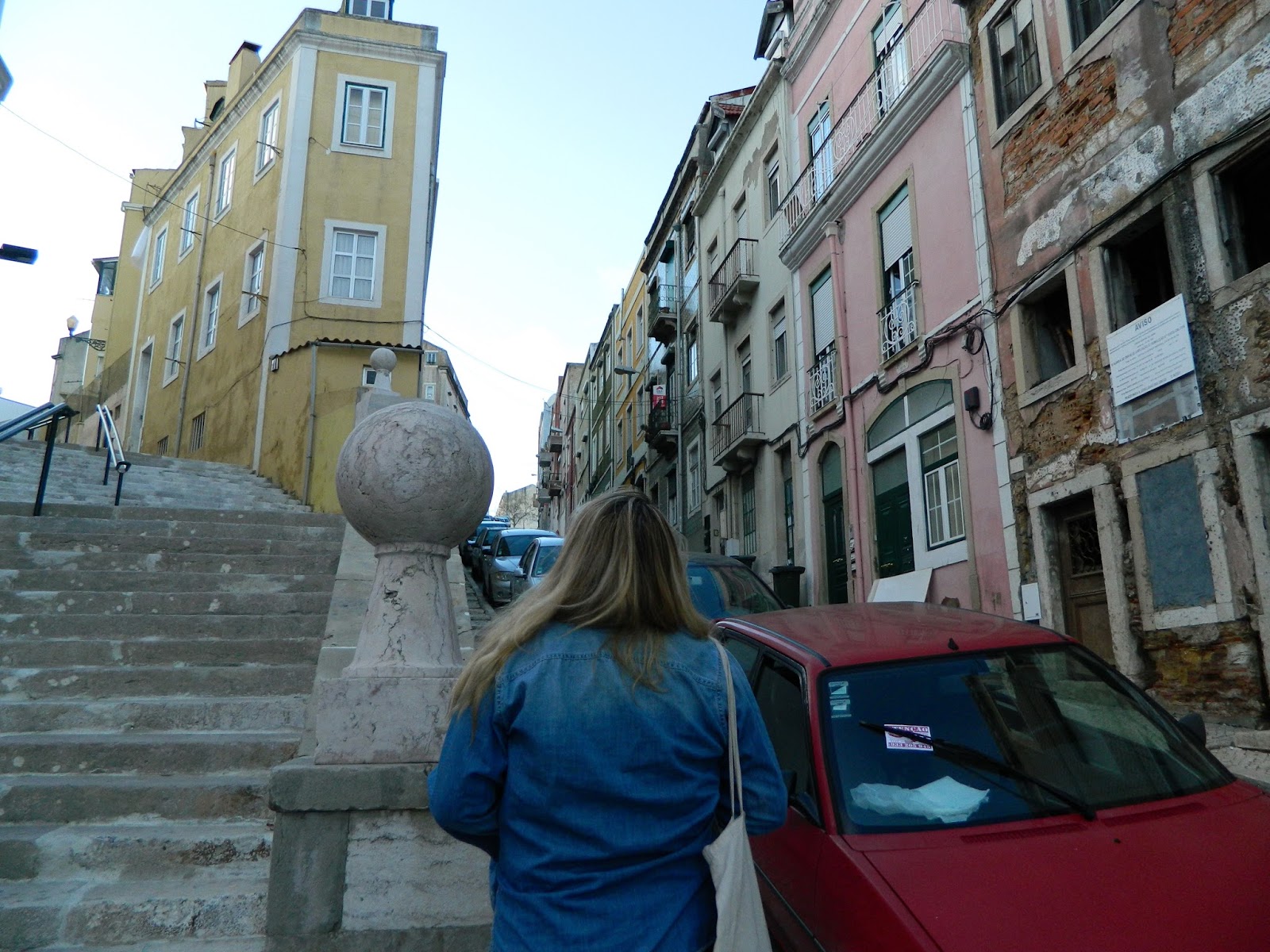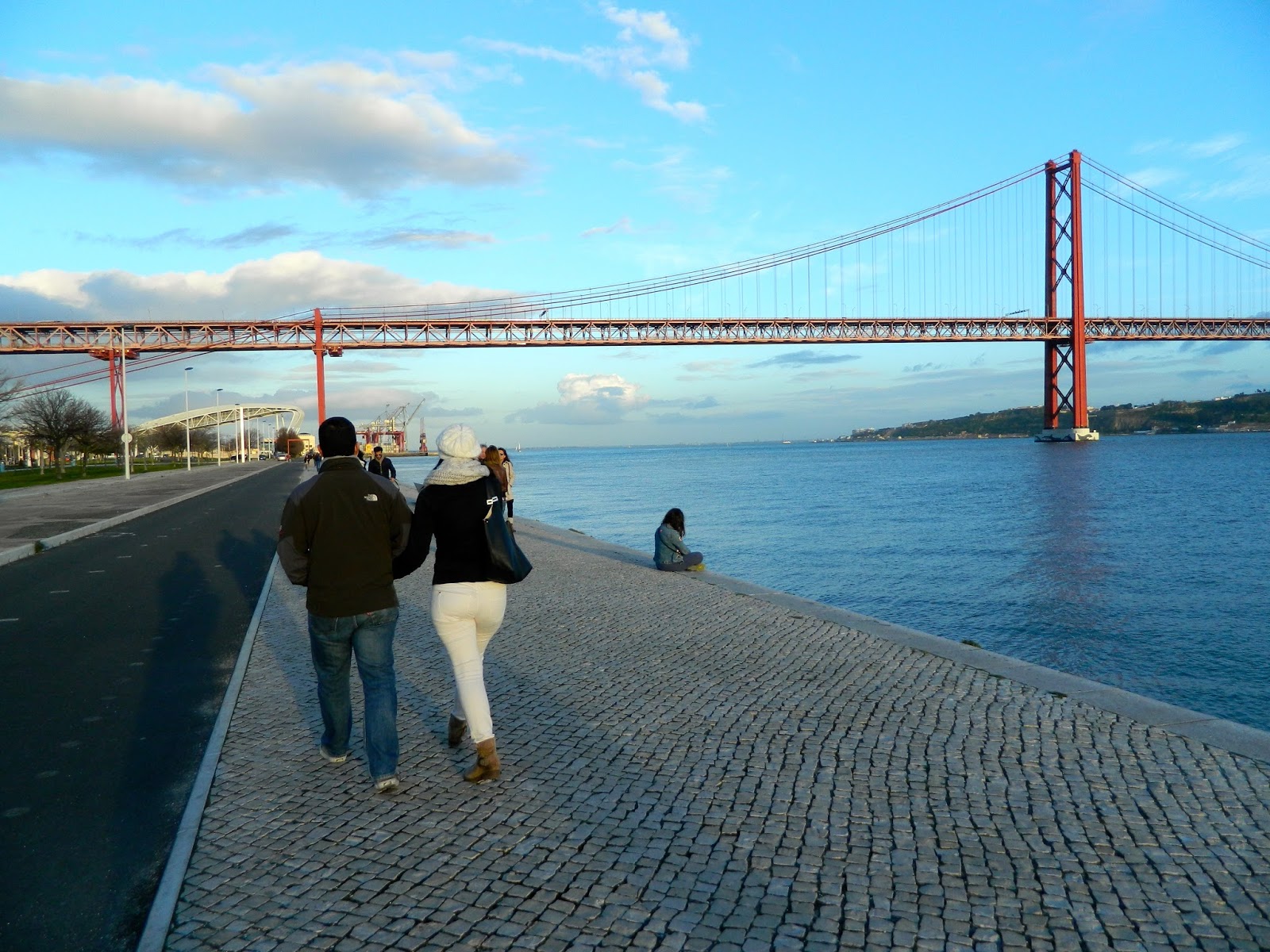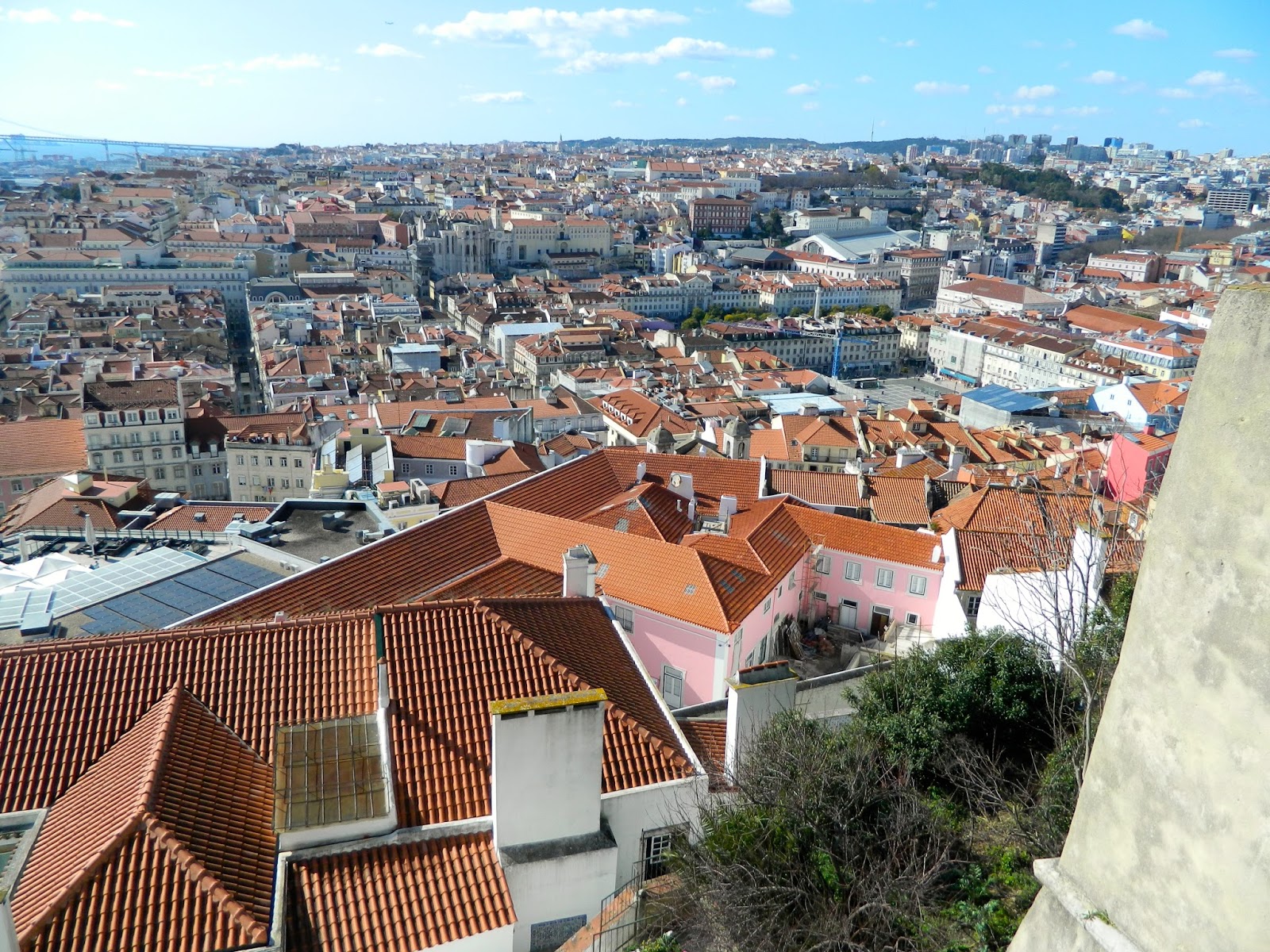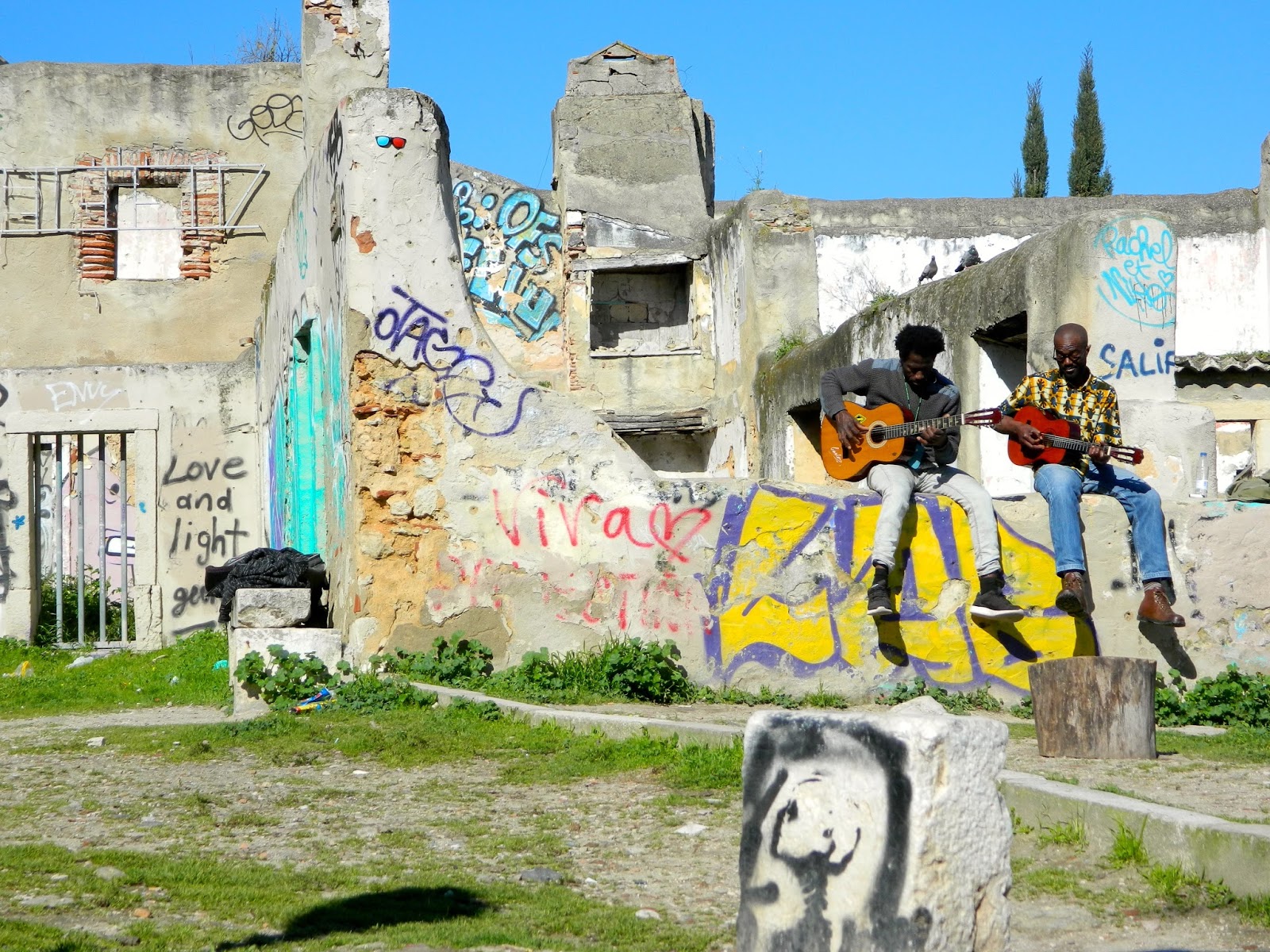After almost missing my connection in the infamously busy Charles de Gaulle airport, it was a two hour flight south to the Iberian peninsula for my first destination this time ’round: Portugal.
Rectangular, coast lined, and filled with rolling hills, Portugal is a country, I would say, unjustifiably overlooked sometimes, at worst overshadowed by the hustle and bustle of its neighbour’s Madrid and Barcelona.

Lisbon is a small capital, intimate and hilly, reminiscent of San Francisco with its trolleys and Valparaíso with its colorful street art. It is multi-racial, enterprising, and infatuating. Large squares plant themselves in the historic center while the Castelo de São Jorge, guarding the city from above, rests as a testament to its history. Do not miss out on this glorious cidade.
Aonde vamos?
Customs was relatively easy coming into the city; I was given a bom día, no one looked at my passport, and I walked through the ‘nothing to declare hallway’ into Portugal in a total of 15 seconds. From there, it was pretty simple to get to the hostel on the other end of the city.

(Photo credits by PintsizedPioneer)
The Lisbon metro is not complex with only 4 lines: linha azul (blue), linha amarela (yellow), linha verde (green), and linha vermelha (red). It is cheap as well, and visitors should purchase and keep the reusable ‘viva viagem card’ upon entry for future travel in the city.
We stayed at the Lisbon Calling Hostel close to the Cais do Sodré: the final stop on the green line. It was a great choice!
Although a little inconspicuous without a proper sign, this cozy hostel is an affordable 16 euros a night in the off season. Wifi, clean bathrooms, friendly helpful staff, and a free light breakfast — it is a decent deal.
February is honestly not the most ‘ideal time’ to come to Portugal.
The tourist season doesn’t get started until it gets warmer; however, since Nina and I both come from cold places, Scotland and Canada respectively, we cannot really complain if it is 18 degrees celsius. If constant sunshine is not imperative, February might actually be a nice time to visit.
One will find the city much calmer without the swarms of tourists common in the warmer months. Prices for hostels will also be reduced and if we can say anything about our case, do not be surprised if you end up with a private room for the same cheap rate.
There are other hostels closer to the city center, but we preferred LCH’s location as well as homey feel. It would receive an 8/10 on the hipster scale if that is important to you.

on how lost one gets. Entry is only 5 euro with a valid student ID! (Photo credits by PintsizedPioneer)
Having only 48 hours or so in the capital, we spent our time walking (mostly up hills). Lisbon is an horizontally challenged city, and much of the public transport is useful in overcoming this endeavor. However, one is not able to visit each and every nook and cranny one desires if they stick to the operating lines.
I recommend exploring, but definitely take a map and be ready for sore legs and feet. Tourist maps do not show topography, and what might look like a straight shot to a destination might actually be quite the rollercoaster.
Bom Apetite!
While Nina was more focused on the architecture, I was more interested in the food, obviously.
In general, Lisbon calls for a certain level of relaxation. You will not be too far from a padaría (bakery) where one should definitely sample the world famous, Pastel de Nata, with a nice coffee.
Delicious little egg custard filled tartlets, these little buggers are addictive for about a euro each. The best in the city are in a location called Belém toward the west away from the historic center. Even the locals apparently go to this location to sample the best pastéis the city has to offer. Go figure!

(Photo credits by PintsizedPioneer)
Other delicacies and consumables include bolinhos de bacalhau (fried cod balls), bifana (pork sandwich), and of course, fine Portuguese wines like green wine, which has a certain bubbly aspect as a result of its fermentation. I was able to have cod fish, but not in bolinho form, and I will attest bifama is a great compliment to any day.
Definitely sample as much as possible, but rest assured, many of these dishes can be sampled outside of Lisbon as well (including the tartlets) if you continue traveling from here.
As for nightlife and it being the off season, one might have a little bit more of a local experience if one goes out in February. Regardless, it will be a hoot. The Portuguese know how to party: going out at 12 – 2:30 AM for the beginning of the evening; attending small bars; drinking outside. The place to do this is in Bairro Alto or on ‘pink street’ near Lisbon Calling Hostel. After some outside alcohol, residents make their way to the clubs. We were able to get in for free (although this may have been because we went early in comparison). Potentially, one can entertain him or herself until 8 AM, but this is an individual choice mind you.

(Photo credits by PintsizedPioneer)
As for something more reserved and sensual for the nights, try the Alfama district to the east for classic Fado: Portugal’s signature soulful genre. Unfortunately, we missed most of the performances Sunday night, but I would recommend going specifically to Rua dos Remédios (Street of the medicines). You will find some nice Fado there in the evening. If you want to get a fantastic taste prior, I would recommend listening to Mariza, the international acclaimed Fado singer, as well as the late Amália Rodrigues.
As for day trips, Lisbon can be a jumping off point to visit other parts of the surrounding capital region including the castle filled city of Sintra (which has a very ‘Harry Potter’ vibe we are told) and the numerous, stunning beaches of the area, which there are many: Ericeira, Tamariz, Sesimbra … you pick …The public transport is your friend for these activities.
Você fala português?
Finally on a practical note, remember that the Portuguese speak Portuguese.
This revelation probably is not a huge shock, but from what we have heard from some locals, some people never try, which saddens them. Now, English is a safe bet in general as well as Spanish and French (and at times German) if you do not know any Portuguese whatsoever, but I have noticed that since I cannot really speak proper Portuguese, about 50 percent will put up with my crap pronunciation and the other 50 percent will switch to English most likely to spare themselves from the agony of hearing me mispronounce their beautiful language.
For me as someone who speaks Spanish to a relatively conversant/fluent level, Portuguese is eerily similar, and I can fake a general understanding. When I speak it, I have to translate the Spanish I am thinking into Portuguese using what I know about the sister language itself giving it an obvious delay in my delivery. Then, I charmingly pronounce everything by, “pretending my tongue is a bit burned and my nose is congested,” to try to get the accent correct/ closer to correct.

(Photo credits by PintsizedPioneer)
I had a whimsical conversation with one hostel worker who described our speech as ‘portuñol’, Portuguese/Spanish, which he says most Portuguese people have a passive knowledge of or are at least able to follow along.
It also is a pejorative title for lesser speech that is not purely Portuguese or Spanish for that matter. However, he said that most people will probably just be happy if a foreigner speaks a related language, but my experience has been lukewarm on this front. However, I have been able to order most meals, buy train tickets and ask for directions, and even flirt, so things are going swimmingly in those departments.
Anyway now, I am in Lagos, a small seaside city in the south. We are just spending the night. Then, we are headed off to Sevilla, Spain for a day or two to escape the rain in Tangier.
The entire Algarve (southern Portugal) is dead currently, and we along with many British and German tourists seem to outnumber the general populace. With little sun and few people, the beachside paradise is a bit dull to be honest. For this reason, Nina and I are traveling light and playing it by ear. However, I was able to sample from Cataplana (Portuguese copper pot stew) here!
Well worth the wait.
Nina and I love Lisbon. It is hip, scenic, delicious, and let’s just say the beard ratio on most of the men is on point. Not to mention if we lived here, our legs would be toned forever. I definitely have to add this to the list of places to live in the future. Stay tuned for more posts about Lagos, Portugal, Spain, and Morocco. We have a week ahead of us! Stay safe and travel more!